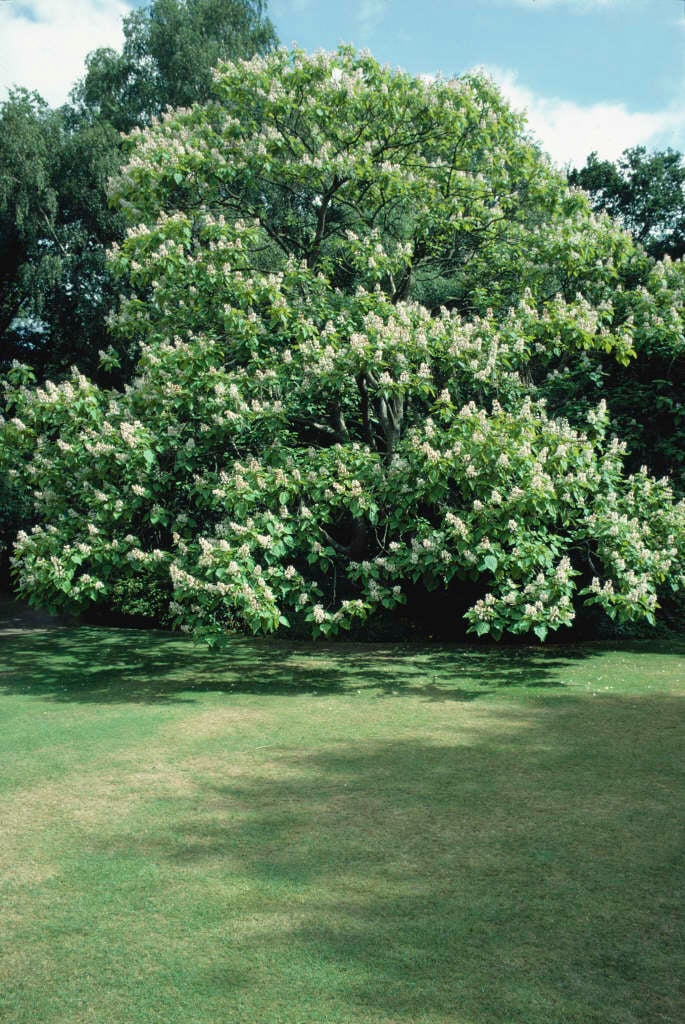Catalpa bignonioides

Indian bean tree
A spreading medium-sized deciduous tree, with pale green, broad-ovate leaves to 25cm in length. Flowers 3-4cm in width, white, marked with orange and purple, in conical panicles. Fruit a slender bean-like pod
Synonyms
Catalpa syringaefoliaCatalpa catalpa
Size
Ultimate height
Higher than 12 metresTime to ultimate height
20–50 yearsUltimate spread
Wider than 8 metresGrowing conditions
Moisture
Moist but well–drained, Well–drainedpH
Acid, Alkaline, NeutralColour & scent
| Stem | Flower | Foliage | Fruit | |
| Spring | Green | |||
|---|---|---|---|---|
| Summer | Orange Purple White | Green | ||
| Autumn | Green | Brown | ||
| Winter |
Position
- Full sun
Aspect
South–facing or West–facing or North–facing or East–facing
Exposure
Sheltered Hardiness
H6Botanical details
- Family
- Bignoniaceae
- Native to GB / Ireland
- No
- Foliage
- Deciduous
- Habit
- Bushy
- Genus
Catalpa are deciduous trees of spreading habit, with handsome, large leaves and erect panicles of showy, bell-shaped flowers in late summer, followed by persistent, slender bean-like seed capsules
- Name status
Correct
- Plant range
- SE USA
How to grow
Cultivation
Grow in a moist but well-drained, fertile soil in a sunny position; will tolerate a heavy clay soil. Shelter from strong winds as these may shred the large leaves. Protect from late spring frosts when young
Propagation
Suggested planting locations and garden types
- Architectural
- Cottage and informal garden
- Wildlife gardens
- Low Maintenance
Pruning
Pests
Generally pest-free
Diseases
May be susceptible to verticillium wilt and rarely, honey fungus
Love gardening
Sign up to receive regular gardening tips, inspiration, offers and more
View our Privacy Policy
Get involved
The Royal Horticultural Society is the UK’s leading gardening charity. We aim to enrich everyone’s life through plants, and make the UK a greener and more beautiful place.

